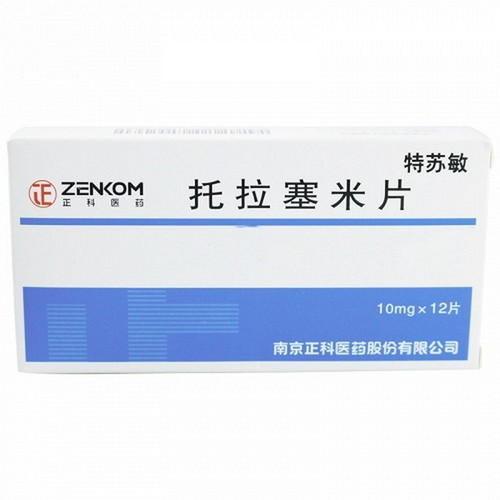Product Overview
[Drug Name]
Generic Name: Torsemide Tablets
Trade Name: Imagtorsemide Tablets 20mg x 12 Tablets
[Main Ingredients]
The main ingredient of this product is torsemide, chemical name: N-[[(1-methylethyl)amino]carbonyl]-4-[(3-methylphenyl)amino]-3-pyridinesulfonamide, chemical structure: Molecular formula: C₁₆H₂O₄O₃S, molecular weight: 348.43
[Indications/Main Functions]
For patients with congestive heart failure, ascites due to liver cirrhosis, and edema caused by kidney disease; may also be used for patients with essential hypertension.
[Specifications]
20mg x 12 tablets
[Dosage and Administration]
1. For edema caused by congestive heart failure, renal failure, and kidney disease: The initial dose is generally 10mg, taken orally once daily in the morning. The dose may be adjusted based on the patient's condition, generally not exceeding 200mg per day. 2. Cirrhosis with ascites: The general initial dose is 10 mg, taken orally once daily in the morning, taken concurrently with an aldosterone antagonist or potassium-sparing diuretic.
3. Essential hypertension: The general initial dose is 5 mg, taken orally once daily. If adequate antihypertensive effect is not achieved within 4 weeks, the dose can be increased to 10 mg, taken orally once daily. If the antihypertensive effect is still insufficient, other antihypertensive medications should be added.
[Adverse Reactions]
Common adverse reactions include headache, dizziness, fatigue, loss of appetite, muscle cramps, nausea and vomiting, hyperglycemia, hyperuricemia, constipation, and diarrhea. Long-term, high-dose use may cause fluid and electrolyte imbalances. Polyuria is common in the early stages of treatment and in older patients. Some patients may experience hypotension, mental confusion, thrombotic complications, and cardiac or cerebral ischemia leading to arrhythmias, angina pectoris, acute myocardial infarction, or syncope. Hypokalemia may occur in patients with a low-potassium diet, vomiting, diarrhea, excessive use of laxatives, and abnormal liver function. Some patients may experience skin allergies, occasionally itching, rash, and photosensitivity reactions, and rarely dry mouth, paresthesias in the limbs, and visual impairment.
[Precautions]
1. Users should regularly check blood electrolytes (especially potassium), blood glucose, uric acid, creatinine, and lipids.
2. Urinary dysfunction must be corrected before starting treatment. Elderly patients, especially at the beginning of treatment, should be carefully monitored for electrolyte and blood volume depletion and symptoms related to hemoconcentration.
3. Patients with cirrhosis and ascites should be hospitalized when using this product as a diuretic. Overly rapid diuresis in these patients can cause severe electrolyte imbalances and hepatic coma.
4. Use with an aldosterone antagonist or potassium-sparing medication can prevent hypokalemia and metabolic alkalosis.
5. Patients with benign prostatic hyperplasia (BPH) may experience difficulty urinating. Increased urine volume with this product may lead to urinary retention and bladder distension.
6. At the initiation of treatment, when switching from other medications, or when starting a new adjunctive medication, some individuals may experience impaired alertness (e.g., while driving a vehicle or operating machinery).







